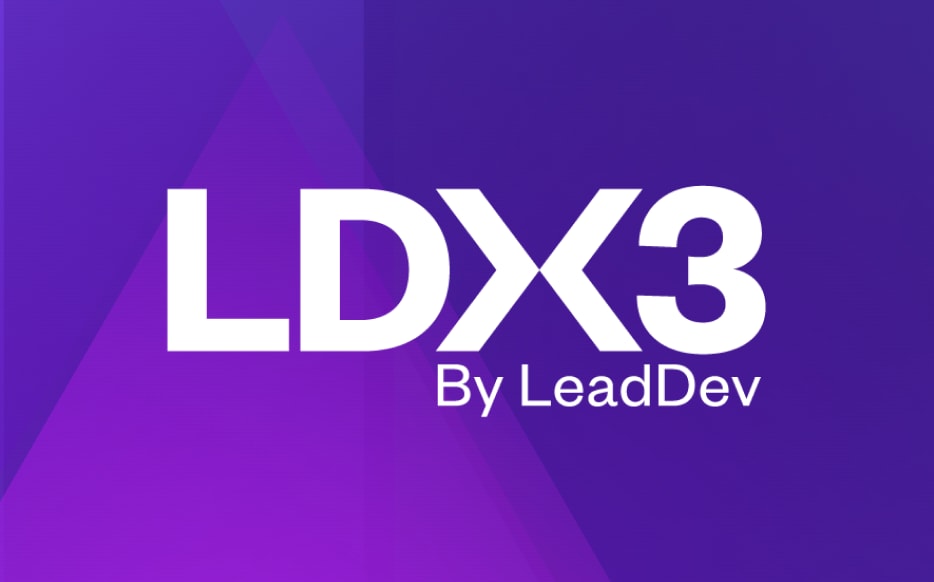Your inbox, upgraded.
Receive weekly engineering insights to level up your leadership approach.
Estimated reading time: 4 minutes
In a few short years, generative AI has evolved from a marvel of disruptive technology to a central lever in corporations’ rally toward peak efficiency.
A new survey from SAP suggests that AI models are becoming C-Suite executives’ most trusted strategic sounding boards. A similar pattern has emerged in developer circles, with some bosses turning to AI advisors to help better run their teams.
Engineering managers and cross-functional tech leaders tell LeadDev that they’re no longer simply using generative AI tools such as GitHub Copilot and ChatGPT as coding assistants. Now, they’re also using these models as thinking partners to help reframe plans and troubleshoot problems.
The trend defies the once widely-held notion that AI would serve to automate rote workplace tasks rather than assisting with job duties that involve problem-solving and creative ideation. Take Microsoft CEO Satya Nadella, who posted on X that “the emerging pattern I’m seeing in my own work is thinking with AI and collaborating with other people.”
The pros and cons of AI brainstorming partners
In SAP’s March survey of 300 C-Level executives at U.S. companies, 74% of respondents said they were more confident in the business advice they received from AI than from colleagues or friends. A 55% majority of the executives said AI-derived insights now supersede traditional, human-led decision-making steps at their firms, in some cases replacing those processes altogether.
While none of the engineering leaders who spoke with LeadDev said they would outsource their decisions to AI altogether, they described using AI to improve their thought processes, making them more confident in their decisions.
Fergal Glynn, a veteran developer and the CMO for London AI security-testing firm, Mindgard, began experimenting with AI writing assistants in 2023, before graduating to generative AI for creating content last year. Glynn has since moved on to incorporating assorted AI tools – including ChatGPT, Claude, and Perplexity AI – for technical fact-checking, solving problems and, most of all, brainstorming ideas.
“I begin with finding the right topic, followed by creating an outline, and finally ending by automating routine tasks such as documentation with the help of AI,” Glynn says. “I also use AI to validate ideas, spot data patterns, and test arguments by simulating debates to understand different viewpoints.”
Robin Patra, director of data, analytics, and AI for ARCO Construction in St. Louis, has similarly reconfigured his workflow to leverage AI in problem-solving. He starts by outlining each challenge and its desired outcomes, then uses AI for “first-draft thinking” to generate preliminary approaches. He then feeds each output into another tool with refined prompts that evaluate how the ideas resonate from different viewpoints, whether technical, executive, or operational. From there, he returns the refined version back to the first tool, using it to compare and contrast against initial positions. “This iterative back-and-forth lets me arrive at a well-rounded draft or decision point to share with stakeholders,” Patra says.
More like this
For Ashwin Das Gururaja, senior engineering manager for Adobe’s Commerce platform, the reasons for choosing AI as an idea-testing partner instead of a friend or colleague are simple: Chatbots are always available to provide a quick reply and, unlike with humans, there is no fear of judgement. “There is always a human tendency to avoid questions that might make others think that you are not aware of a domain or subject,” Gururaja says. “There are no such issues with chatbots.”
Although AI can provide a low-risk environment for simulating viewpoints and structuring arguments, it doesn’t replace lived experience, relational judgment, and an awareness of organizational dynamics. “AI tools can speed up research and tackle blank-page syndrome. However, I have observed that these tools still struggle to make context-aware decisions as they offer generic solutions,” Glynn says. To fill in those gaps, only a human colleague – or several – will suffice.
Patra recently learned this particular lesson firsthand. When his company was planning to shift its data-engineering org from a centralized platform team to a more federated and domain-aligned setup, Patra used AI to develop and refine a proposal for a new org model.
At first glance, his plan seemed sound. But when he ran it by a few senior engineers, it quickly became clear that his AI-iterated proposal had overlooked key cultural friction points within the organization. “That conversation reminded me that GenAI can give you the scaffolding for a plan, but it’s still on you to fill in the human complexities,” he says.
AI as a catalyst for better leadership
Despite the technology’s shortcomings, leaders are optimistic about how various AI tools are reshaping management approaches. Gururaja notes that he’s used AI to help “clean up roadmap and prioritization proposals and even help me re-frame feedback and write-ups for performance evaluations,” suggesting that AI can help managers communicate more effectively with their teams.
For Patra, the impact on leadership skills runs even deeper. While architecting a data strategy initiative, he used AI to hash out multiple data platform models and test their alignment with business priorities and talent maturity. “It helped me surface trade-offs quickly, pressure-test assumptions, and prepare for leadership conversations with a much more well-rounded view,” he says.

London • June 2 & 3, 2026
Rands, Nicole Forsgren & Matej Pfajfar confirmed
This capacity to rapidly evaluate multiple scenarios and perspectives can transform decision-making processes. “These tools are leveling the playing field for junior members,” Glynn observes. “They can now easily propose AI-augmented ideas that earlier required senior expertise and guidance.”
AI tools may even present new opportunities for leaders to gain insight on their own thought processes, identifying potential flaws in how they solve a problem or think through an idea.
“That’s the real surprise – GenAI isn’t just helping me build better systems,” Patra says. “It’s helping me become a more reflective, well-rounded leader. The tools may be artificial, but the growth they provoke is very real.”





